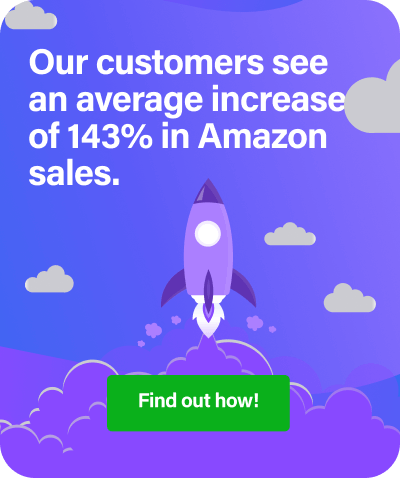If you’re just starting to sell online (i.e. six months or under), then one of the biggest factors you’ve got to be aware of is how their search engine operates. Virtually everyone who grew up in the digital age has some notion of how Google operates, but one of the biggest mistakes you can make is thinking it works similarly to Amazon.
In this post, RepricerExpress will explore Amazon’s Search Engine Page Results (SERP) and how you can tweak it to your own benefit.
Amazon SERP: Your Best Friend in eCommerce
Right off the bat, you’ve got to configure your way of thinking to suit Amazon’s search model, as its capacity for product searches is about three times that of Google’s. That’s a huge number, and it’s only continuing to grow. And with it comes a certain set of operating criteria that can make your selling life a whole lot easier. Having said that, let’s take a look at some of the main differences and what it means for you.
How Data is Structured
With Google, you’re fairly open to add whatever kind (and amount) of structure you want to your site. It’s pretty free-wheeling over in Google-world, but not so much in Amazon. They’ve got things like data fields (i.e. name, definition, description, etc.), and even the values that go in each field (i.e. character count). It’s a highly structured way of composing a page, and it leads to SERPs that’ll come out with consistent results.
Differentiating Between Search Rank and Conversion Rate
Put novel content on your page on a regular basis, and Google will tend to reward you with a higher search rank. But that’s not necessarily of the same importance with Amazon, as they tend to value conversion rate more.
Related reading: How to increase your ecommerce conversions
What they care about most is how well your products sell. It’s a bit ironic because you can have a super turbo optimised site that be an ace for Google’s search engine, but if you can’t complement it with actual sales, it’s of little use for Amazon. And what are some of the things Amazon values most for its own ranking factors?
- Price: If we had a gun to our heads and had to pick just one factor that matters most to Amazon when it comes to conversions, it’d be price. But while it’s hugely important, it’s not everything (but make sure you have competitive repricing in hand, anyway). Just make sure you’re looked at landed price (delivery included) instead of just the product price.
- Images: We’d go with awesome pictures as the second-most important thing when it comes to SERPs. What’s funny about images is they don’t affect search rank that directly, but rather act as boosters to product listings that can help with conversions.
- Title: Remember how we briefly talked about Amazon putting data fields in place when it comes to site structure? Well, each data field isn’t weighted equally and the title is the most important. If you want to rank highly on the SERP, then you must have a title that’s accurate, relevant, concise, capitalised and using numerals instead of number words. Oh, and follow this formula: brand and description, product line, material or key ingredient, colour, size, quantity.
- Description: This area is a bit funny when it comes to SERPs because it runs sort of middle of the road. You want to make sure you’ve got great product descriptions (you can even use a bit of HTML to break up a wall of text into bullets), but you don’t want to spend all your time on it because descriptions aren’t weighted the most important.
- Fulfilment Channel: Just like description, fulfilment channel sort of runs in the middle when it comes to SERP importance. Using Fulfilment by Amazon definitely makes life easier for both merchants and Amazon (you get someone else to do the work, while Amazon showcases their little pet), but it won’t be the end of the world if you don’t use it. But given how easy it is to use and how much consumers trust this brand, it doesn’t hurt at all to give it a shot.
- Search Terms: And now we come to the least important factor relating to Amazon’s SERPs. There are just a couple of basic rules to get this part right: don’t repeat words (synonyms are okay, but misspellings aren’t), don’t waste space on punctuation, and order them left-to-right of importance just to be on the safe side.
Final Thoughts
If you were reading carefully, then the most important point to stick with you should have been pricing. One of the neatest tricks to ensure you always have the most competitive costs is to regularly reprice your wares by using, say, RepricerExpress so that you never have to lose out on potential conversions (hello, happy Amazon SERP!) to your competitors. But to get started, you have to sign up for your 15-day free trial first.



